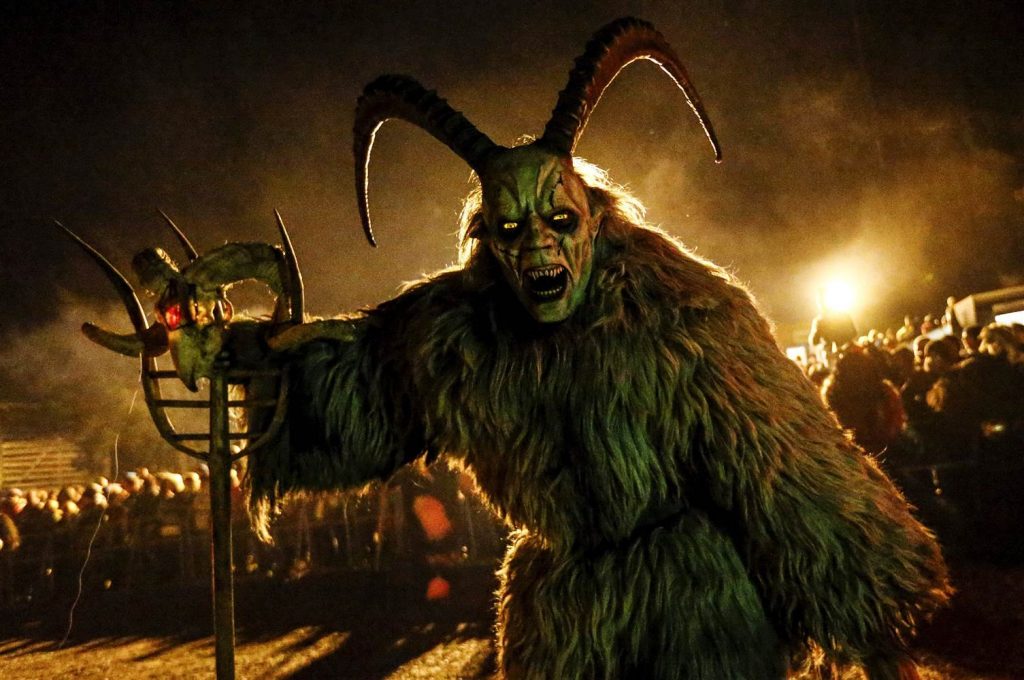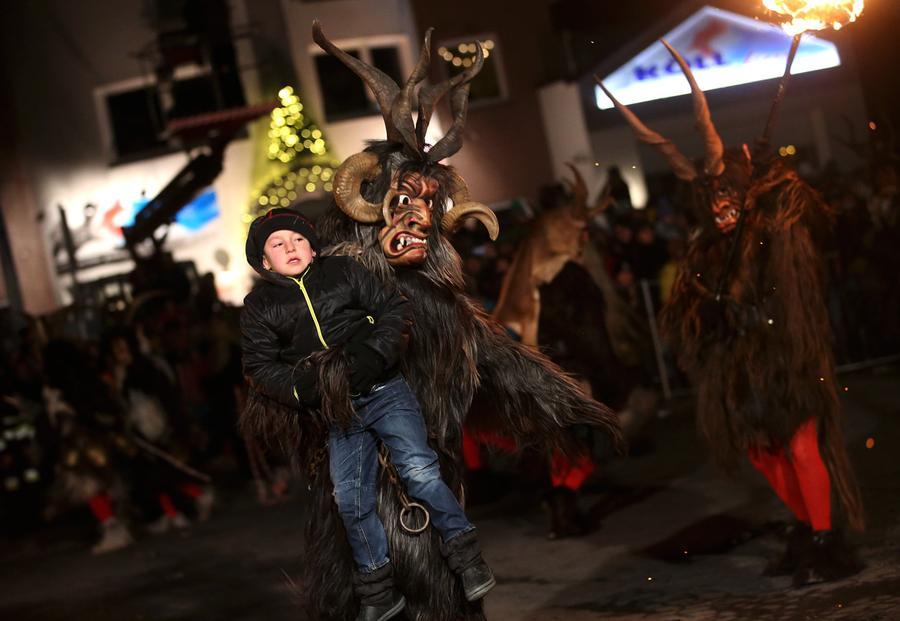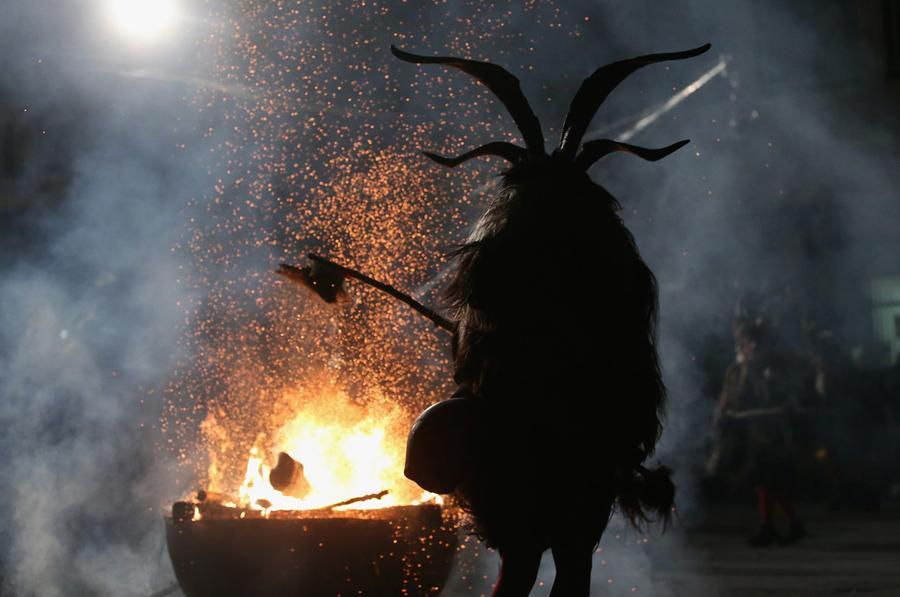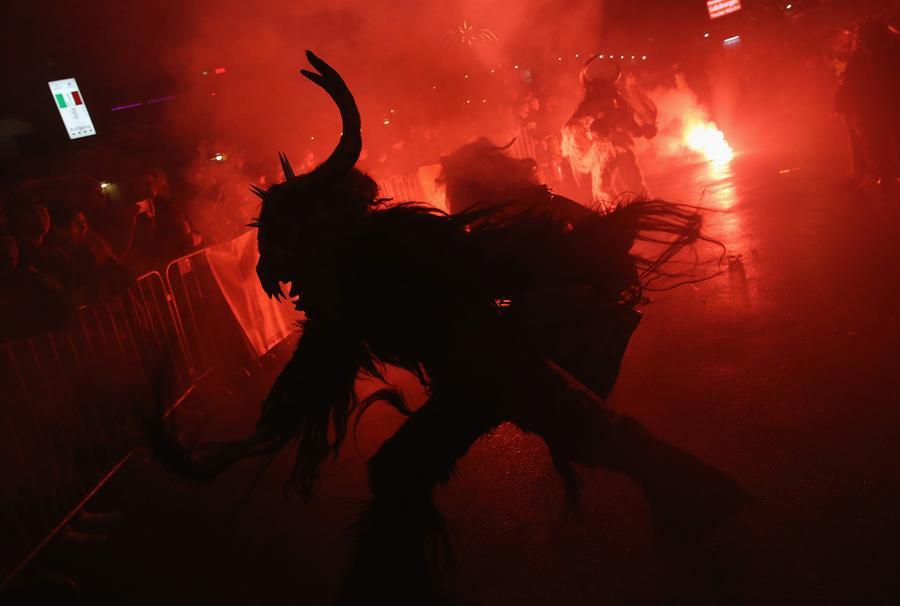
PHOTO: nbcnews.com
When most children in the world are thinking of a jolly, round old man with a white beard who’s going to come clambering down their chimney on December 25th, bearing a bag full of presents, children in Bavaria, much of Eastern Europe, and parts of Germany are gearing up for Krampusnacht twenty days before. We don’t normally think of Christmastime as involving scary demons with horns and masks, but for some, it’s all part of their traditional Christmas. But, what is Krampusnacht? How did this strange holiday start and where did it come from?
What is Krampusnacht?

PHOTO: theatlantic.com
It’s a holiday that feels a lot more like Halloween than Christmas. On Krampusnacht, December 5th, men dressed as Krampus drink a bunch of alcohol, run through the streets, and frighten children. Often, they chase delinquent children around and hit them with sticks.
The Krampus costume is traditionally made up of a hand-carved wooden mask and a suit made from sheep or goat skin. Cowbells are worn around the wearer’s hips. Costumes can be pretty pricey in Europe, and now they’re usually made with less expensive materials, like faux fur and face paint.
The folklore of Krampusnacht goes back at least a thousand years, but why on earth did it start? What’s the point of a bunch of men dressing up and terrorizing children during the Christmas season?
Where Did “Krampus” come from?

PHOTO: theatlantic.com
The origin of Krampus is mostly unknown, but most anthropologists agree that the tradition is pre-Christian, going back to pagan mythology. One authority on the subject believes that Krampus goes as far back as the Wiccan deity of the Horned God of the Witches. Another anthropologist, John J. Honigmann wrote, “Krampus derives from a pagan supernatural who was assimilated to the Christian devil.”
Our knowledge of the pre-Christian pagan pantheon of Europe is pretty fuzzy, considering the druids of Europe didn’t write anything down, and their places of worship and symbols and rites were often taken over and assimilated into Christian traditions in the missionaries’ attempt to wipe the pagan traditions out entirely. Krampus, and the “Horned God” in general, is a good example of this phenomenon.
According to historians, horned devils first began to appear in medieval plays around the 11th century. These would have been adopted into the narrative of Christianity in an attempt to use symbols that the native people were familiar with. Over time, the deity that Krampus originated from was corrupted into the mischievous, child-terrorizing ghoul we see today. Traditionally, St. Nicholas and Krampus appear together, working as a team. St. Nicholas rewards the good children, while Krampus punishes the naughty ones.
Modern Interpretations

PHOTO: theatlantic.com
Today, Krampusnacht is celebrated in many places across Europe, and has even become popular in the United States. In 2013, over 200 Krampuses participated in Austria’s first ever annual national Krampusnacht. In Clintonville, Ohio, on December 5th of 2015, the first Krampus parade was held and the residents have begun to make it a regular tradition. On both the west and east coasts, in Seattle and Philadelphia, other Krampus parades are held to signify the beginning of the Christmas season.

